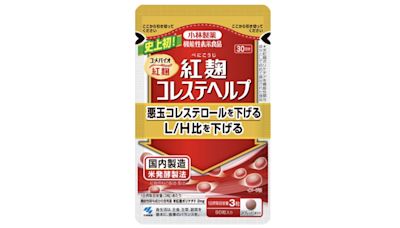搜尋結果
The term sushi literally means "sour-tasting", as the overall dish has a sour and umami or savory taste. The term comes from an antiquated し shi terminal-form conjugation, no longer used in other contexts, of the adjectival verb sui (酸い, "to be sour"), [13] resulting in the term sushi (酸し). [14]
D. flava. Binomial name. Diversidoris flava. (Eliot, 1904) [1] Synonyms. Chromodoris flava Eliot, 1904 (original combination) Glossodoris flava (Eliot, 1904) Noumea flava (Eliot, 1904) Diversidoris flava is a yellow species of sea slug, a dorid nudibranch, a shell-less marine gastropod mollusk in the family Chromodorididae.
What links here Related changes Upload file Special pages Permanent link Page information Cite this page Get shortened URL Download QR code The Aeolidida is a taxonomic clade of sea slugs, specifically aeolid nudibranchs, marine gastropod molluscs in the clade Cladobranchia. They are distinguished from other ...
- Appearance
- Distribution
- Use of Ingested Cellular Material
- Oxynoacea
- Plakobranchoidea
- Evolution
- Taxonomy
- Autotomy
- Further Reading
Many of these gastropods (e.g. Elysia spp.) resemble winged slugs with a pair of cephalic tentacles. In photosynthetic members of the group, the wings, or parapodia, can be unfurled to maximise the area of the organism that is struck by sunlight. In others (e.g. Placida spp.), cylindrical cerataextend from the dorsal surface. The majority of sacogl...
Sacoglossa species are found worldwide in tropical and temperate oceans, but most live in the central Pacific Ocean, where they frequent the shorelines of tropical islands; diverse tracts of species are also known in the Caribbean and Indo-Pacific. These three areas have distinct ranges of species, indicating a high degree of biogeographic separati...
The sacoglossans can use the chloroplasts of the algae on which they feed, which they keep alive for hours to months after their ingestion. They maintain the cells and metabolise the photosynthetic products; this process is termed kleptoplasty, and the sacoglossans are the only animals to employ it; some ciliates and foraminifera (protists) also em...
Around 20% of sacoglossan species bear a shell. The Oxynoacea contains three shelled families, and all feed solely on algae of the genus Caulerpa. None of these organisms benefits from the photosynthesis of the ingested chloroplasts, but the chloroplasts may have been retained to perform a camouflaging function. The shells of the Volvatellidae and ...
The majority of sacoglossans are shell-less, consequently, the Plakobranchoidea are commonly described using the vernacular term "sea slugs", which can lead to their confusion with the only very distantly related nudibranchs. However, the plakobranchoid Elysia (and undoubtedly others) do develop a shell before hatching from their egg.Indeed, at lea...
The ancestor of the Sacoglossa is presumed to have fed on a now-extinct calcifying green alga in the Udoteaceae. The first fossil evidence of the group comes from bivalved shells dating to the Eocene, and further bivalved shells are known from later geological periods, although the thin nature of the shells and their high-erosion habitat usually ma...
The suborder name comes from the Greek words σάκος sákos "shield" and γλώσσα glóssa "tongue" because the species have single toothed radulas.
Extreme autotomy has been observed on two species, Elysia marginata and E. atroviridis, studied in vitro. Over the course of the study, some individuals decapitated themselves, a behavior known as autotomy. The neck wound usually closed within one day, and the heads, especially in younger specimens, began to feed on algae within hours. Twenty days ...
Marcus E. d. B.-R. (1982). "Systematics of the genera of the order Ascoglossa (Gastropoda)". Journal of Molluscan Studies. 48 (supp10): 1–31. doi:10.1093/oxfordjournals.mollus.a065666. Archived fro...
Slug (coin) A plain metal washer, if of the correct size and weight, may be accepted as a coin by a vending machine. A slug is a counterfeit coin that is illegally used to make purchases. The object substituted may be an inexpensive object such as a washer or a coin from another country with far lower purchasing power than the coin it is being ...
The Spanish slug ( Arion vulgaris, but formerly widely referred to as Arion lusitanicus owing to a misidentification) is an air-breathing land slug, a terrestrial pulmonate gastropod mollusk in the family Arionidae, the roundback slugs. Other vernacular names are Lusitanian slug, Iberian slug, and killer slug .
Euclidae. Apodidae Paclt, 1947 [1] The Limacodidae or Eucleidae are a family of moths in the superfamily Zygaenoidea or the Cossoidea; [2] the placement is in dispute. They are often called slug moths because their caterpillars bear a distinct resemblance to slugs. [3] They are also called cup moths because of the shape of their cocoons.






